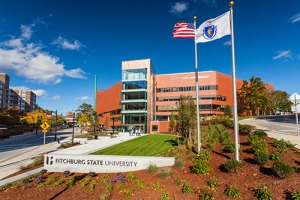 Celebrate the “You FIT Here!” banner presentation on Oct. 1Celebrate the unique heritage of the city of Fitchburg and Fitchburg State University with an official presentation of the “You FIT Here!” banners on Wednesday, Oct. 1, at 3:30 p.m. on the campus’ main quadrangle. The rain location will be at Hammond Main Lounge. The banners will be presented to Fitchburg State University President Donna Hodge and city partners Nick Capasso (Fitchburg Art Museum), Merrick Henry (COFF33 Corp) and Fitchburg Mayor Samantha Squailia. There will be live performances sponsored by Coff33 Corp., a celebration of the “ Fitchburg Your Story” podcast series with a listening station (you can sign up to record your own episode), a reception with food, displays and giveaways, and a Heritage Walk, led by university archivist Asher Jackson and Dr. Danette Day, starting in the quad and ending at the Abolitionist Park (.4 miles). A shuttle will be available for those who need it to and from Abolitionist Park. Earn an exclusive pin to commemorate your experience. The event is free and open to the public. On Tuesday, Sept. 30 and Wednesday, Oct. 1, there will be a Teach-In at Abolitionist Park. All are welcome to join Fitchburg State classes in the park. On September 30, from 8-11:30 a.m., offerings will include Dr. David Weiss presenting on domestic terror and hate crime; Dr. Will Cortezia discussing diversity in education; Dr. Kisha Tracy presenting the Bible as literature; and Dr. Danette Day discussing culturally proficient education . On October 1, at 9:30 a.m. and 12:30 p.m., Dr. Will Cortezia presents on the abolitionist movement and how it relates to social justice in the present day; Dr. Michael Hoberman discusses a pathbreaking abolitionist text from 1789: The Interesting Narrative of the Life of Olaudah Equiano at 11 a.m.; and Dr. Eric Budd discusses the origins of abolitionism and other social movements at 11 a.m. You FIT Here is funded by the Deans’ Anti-Racism Fund and the Crocker Center for Civic Engagement.
Celebrate the “You FIT Here!” banner presentation on Oct. 1Celebrate the unique heritage of the city of Fitchburg and Fitchburg State University with an official presentation of the “You FIT Here!” banners on Wednesday, Oct. 1, at 3:30 p.m. on the campus’ main quadrangle. The rain location will be at Hammond Main Lounge. The banners will be presented to Fitchburg State University President Donna Hodge and city partners Nick Capasso (Fitchburg Art Museum), Merrick Henry (COFF33 Corp) and Fitchburg Mayor Samantha Squailia. There will be live performances sponsored by Coff33 Corp., a celebration of the “ Fitchburg Your Story” podcast series with a listening station (you can sign up to record your own episode), a reception with food, displays and giveaways, and a Heritage Walk, led by university archivist Asher Jackson and Dr. Danette Day, starting in the quad and ending at the Abolitionist Park (.4 miles). A shuttle will be available for those who need it to and from Abolitionist Park. Earn an exclusive pin to commemorate your experience. The event is free and open to the public. On Tuesday, Sept. 30 and Wednesday, Oct. 1, there will be a Teach-In at Abolitionist Park. All are welcome to join Fitchburg State classes in the park. On September 30, from 8-11:30 a.m., offerings will include Dr. David Weiss presenting on domestic terror and hate crime; Dr. Will Cortezia discussing diversity in education; Dr. Kisha Tracy presenting the Bible as literature; and Dr. Danette Day discussing culturally proficient education . On October 1, at 9:30 a.m. and 12:30 p.m., Dr. Will Cortezia presents on the abolitionist movement and how it relates to social justice in the present day; Dr. Michael Hoberman discusses a pathbreaking abolitionist text from 1789: The Interesting Narrative of the Life of Olaudah Equiano at 11 a.m.; and Dr. Eric Budd discusses the origins of abolitionism and other social movements at 11 a.m. You FIT Here is funded by the Deans’ Anti-Racism Fund and the Crocker Center for Civic Engagement.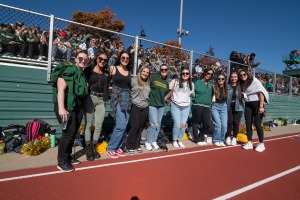 Falcons Fly Home: Fitchburg State Homecoming on Oct. 2-5Fitchburg State University will welcome alumni, students, families, and friends to campus for Homecoming 2025, running Thursday, Oct. 2 through Sunday, Oct. 5. The weekend celebration will feature a wide array of events, including athletic contests, the Homecoming Carnival, Casino Night, and an Admissions Open House for prospective students and their families. President Donna Hodge said Homecoming is one of the most meaningful traditions at the university. “Homecoming is more than a weekend of events. It is a living tradition that reminds us who we are, where we’ve come from, and where we’re going. When alumni, students, faculty, staff, families, and neighbors fill this campus with their energy, we see the full picture of what it means to be a Falcon. That spirit—the pride, the connection, and the momentum we create together—is what carries Fitchburg State forward.” Highlights include a campus Pep Rally on Thursday, Oct. 2, Casino Night on Friday, Oct. 3, and Saturday’s packed lineup of tailgating, football, men’s soccer, and the Homecoming Carnival. The football team will host Framingham State at noon at Elliot Field, followed by men’s soccer taking on Salem State at 5 p.m. The university will also host a Fall Open House on Saturday, Oct. 4, giving prospective students and families the chance to tour the campus, meet faculty, coaches, and staff, and experience Fitchburg State’s vibrant community in action. Athletic Director Matthew Burke said the weekend is one of the most exciting times of the year. “Nothing energizes our student-athletes more than a packed stadium. This Homecoming, let's give our Falcons a true home-field advantage. Come back to campus, reconnect with Fitchburg State, and fill the stands to support men’s soccer and football.” Full schedule and registration details are available at fitchburgstate.edu/homecoming.
Falcons Fly Home: Fitchburg State Homecoming on Oct. 2-5Fitchburg State University will welcome alumni, students, families, and friends to campus for Homecoming 2025, running Thursday, Oct. 2 through Sunday, Oct. 5. The weekend celebration will feature a wide array of events, including athletic contests, the Homecoming Carnival, Casino Night, and an Admissions Open House for prospective students and their families. President Donna Hodge said Homecoming is one of the most meaningful traditions at the university. “Homecoming is more than a weekend of events. It is a living tradition that reminds us who we are, where we’ve come from, and where we’re going. When alumni, students, faculty, staff, families, and neighbors fill this campus with their energy, we see the full picture of what it means to be a Falcon. That spirit—the pride, the connection, and the momentum we create together—is what carries Fitchburg State forward.” Highlights include a campus Pep Rally on Thursday, Oct. 2, Casino Night on Friday, Oct. 3, and Saturday’s packed lineup of tailgating, football, men’s soccer, and the Homecoming Carnival. The football team will host Framingham State at noon at Elliot Field, followed by men’s soccer taking on Salem State at 5 p.m. The university will also host a Fall Open House on Saturday, Oct. 4, giving prospective students and families the chance to tour the campus, meet faculty, coaches, and staff, and experience Fitchburg State’s vibrant community in action. Athletic Director Matthew Burke said the weekend is one of the most exciting times of the year. “Nothing energizes our student-athletes more than a packed stadium. This Homecoming, let's give our Falcons a true home-field advantage. Come back to campus, reconnect with Fitchburg State, and fill the stands to support men’s soccer and football.” Full schedule and registration details are available at fitchburgstate.edu/homecoming.
- Celebrate the “You FIT Here!” banner presentation on Oct. 1Celebrate the unique heritage of the city of Fitchburg and Fitchburg State University with an official presentation of the “You FIT Here!” banners on Wednesday, Oct. 1, at 3:30 p.m. on the campus’ main quadrangle. The rain location will be at Hammond Main Lounge. The banners will be presented to Fitchburg State University President Donna Hodge and city partners Nick Capasso (Fitchburg Art Museum), Merrick Henry (COFF33 Corp) and Fitchburg Mayor Samantha Squailia. There will be live performances sponsored by Coff33 Corp., a celebration of the “ Fitchburg Your Story” podcast series with a listening station (you can sign up to record your own episode), a reception with food, displays and giveaways, and a Heritage Walk, led by university archivist Asher Jackson and Dr. Danette Day, starting in the quad and ending at the Abolitionist Park (.4 miles). A shuttle will be available for those who need it to and from Abolitionist Park. Earn an exclusive pin to commemorate your experience. The event is free and open to the public. On Tuesday, Sept. 30 and Wednesday, Oct. 1, there will be a Teach-In at Abolitionist Park. All are welcome to join Fitchburg State classes in the park. On September 30, from 8-11:30 a.m., offerings will include Dr. David Weiss presenting on domestic terror and hate crime; Dr. Will Cortezia discussing diversity in education; Dr. Kisha Tracy presenting the Bible as literature; and Dr. Danette Day discussing culturally proficient education . On October 1, at 9:30 a.m. and 12:30 p.m., Dr. Will Cortezia presents on the abolitionist movement and how it relates to social justice in the present day; Dr. Michael Hoberman discusses a pathbreaking abolitionist text from 1789: The Interesting Narrative of the Life of Olaudah Equiano at 11 a.m.; and Dr. Eric Budd discusses the origins of abolitionism and other social movements at 11 a.m. You FIT Here is funded by the Deans’ Anti-Racism Fund and the Crocker Center for Civic Engagement.

- Falcons Fly Home: Fitchburg State Homecoming on Oct. 2-5Fitchburg State University will welcome alumni, students, families, and friends to campus for Homecoming 2025, running Thursday, Oct. 2 through Sunday, Oct. 5. The weekend celebration will feature a wide array of events, including athletic contests, the Homecoming Carnival, Casino Night, and an Admissions Open House for prospective students and their families. President Donna Hodge said Homecoming is one of the most meaningful traditions at the university. “Homecoming is more than a weekend of events. It is a living tradition that reminds us who we are, where we’ve come from, and where we’re going. When alumni, students, faculty, staff, families, and neighbors fill this campus with their energy, we see the full picture of what it means to be a Falcon. That spirit—the pride, the connection, and the momentum we create together—is what carries Fitchburg State forward.” Highlights include a campus Pep Rally on Thursday, Oct. 2, Casino Night on Friday, Oct. 3, and Saturday’s packed lineup of tailgating, football, men’s soccer, and the Homecoming Carnival. The football team will host Framingham State at noon at Elliot Field, followed by men’s soccer taking on Salem State at 5 p.m. The university will also host a Fall Open House on Saturday, Oct. 4, giving prospective students and families the chance to tour the campus, meet faculty, coaches, and staff, and experience Fitchburg State’s vibrant community in action. Athletic Director Matthew Burke said the weekend is one of the most exciting times of the year. “Nothing energizes our student-athletes more than a packed stadium. This Homecoming, let's give our Falcons a true home-field advantage. Come back to campus, reconnect with Fitchburg State, and fill the stands to support men’s soccer and football.” Full schedule and registration details are available at fitchburgstate.edu/homecoming.

- Fitchburg State recognized for social mobility in latest US news rankingsFitchburg State University has once again been recognized by U.S. News & World Report for supporting the upward social mobility of its students in the publication’s annual rankings of colleges and universities. In addition to being named among the best regional universities in the North and among the top public universities, Fitchburg State was ranked among the highest performing institutions in Massachusetts for social mobility. This category measures how well institutions succeed at enrolling and graduating economically disadvantaged students. “Recognition in social mobility goes to the heart of who we are as a university,” said Fitchburg State President Donna Hodge. “As a first-generation student myself, I know what it means to have access to an education that changes the course of your life. For 132 years, Fitchburg State has opened doors for students who might otherwise be left on the margins, and that mission continues with urgency and pride today. Our work is not just about degrees—it is about fueling opportunity, strengthening families, and shaping communities across the Commonwealth and beyond. These rankings affirm the momentum we are building, and they underscore our commitment to making sure higher education remains a powerful engine of equity and possibility.” U.S. News & World Report has published annual rankings of colleges and universities since 1983. Details on its methodology are available on the publication’s website.
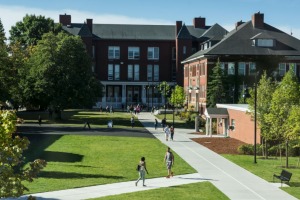
- Presidential Ambassadors Showcase on Sept. 25Academics change lives. That’s the theme of this year’s Presidential Ambassadors Program at Fitchburg State University. The program fosters leadership development among students by providing unique opportunities to design and implement projects that strengthen communities. The Presidential Ambassadors Showcase will take place on Thursday, Sept. 25, at the Hammond Hall Main Lounge from 4-5:30 p.m. "This showcase is more than a celebration of student projects; it is a reflection of who we are as a university," President Donna Hodge said. "Our Presidential Ambassadors embody the momentum and mission of Fitchburg State. They take the lessons learned in the classroom and bring them to life through service, leadership, and innovation. Their work reminds us that education is not only about personal achievement, but also about building stronger communities and opening doors for those who will follow. I am proud of the example they set and grateful for the energy and vision they bring to our campus and beyond." This event highlights the projects of President Hodge's Presidential Ambassadors, recognizes campus community contributions, and honors the transformative power of education. “The Presidential Ambassador Program exemplifies who we are at Fitchburg State,” said Dr. Christine Dee, Professor of History and Special Assistant to the President, who will supervise the ambassadors this year. “We love to learn, to build, and to move forward. The ambassadors combine their academic interests with project management skills to enact positive, meaningful change. Dr. Hodge empowers all students at Fitchburg State to chart their own educational path. This program is an example of the student-focused opportunities the president has created at the university.” This year’s Presidential Ambassadors are: Veronica Barton, Kole Broderick, Alexis DeSimone, Priscilla Fordjour, Geybrell Liriano, Sophia Moore, Sydney-Amelia Nortelus, Peter J. Norton, Alexis Sandmann, Reshawn Stewart, Aidan Thompson, Matthew Gill and Julia Arena. Arena and Gill are returning Presidential Ambassadors. “We are excited to work with these talented and diverse students,” said Dee. “Together, they are a powerful team that serves our campus with distinction.” At the State of the University Address to kick off the start of the year, President Hodge honored this year’s group of Presidential Ambassadors, who are bold representatives of the university’s spirit, service, and momentum, with green blazers. The Ambassadors volunteer at high-level campus and community events, they meet alumni and legislators, and they tour special guests around campus. They do it all with poise, humility, and a deep love for Fitchburg State. “These students represent the best of who we are and the best of where we’re going,” Hodge said.
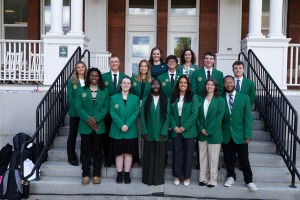
- Richard Kerris Photography Exhibit 1.0The Richard Kerris Photography Exhibit 1.0 Opening Reception will take place at the Fiorentino Foyer and Sanders Hallway on Thursday, September 25, from 4-7 p.m. The Gallery is sectioned into three parts, each reflecting a style appropriate to the subjects and places captured. The three chapters are: Breath - "The movement between stillness and flight. Images that inhale and exhale with life." Poise - "The tension held in performance, where control and emotion intersect." Moment - "A captured instant suspended in time — fleeting, honest, and whole." Kerris, a 1983 alumnus, says that Fitchburg State holds a special place in his heart. “It was here that I was first encouraged to explore beyond the obvious—to take risks, to create,” Kerris said. “My internship filming music videos in Boston nightclubs lit the spark that grew into a production company and eventually carried me through careers at Pixar, Apple, Lucasfilm, and now NVIDIA. Along the way, I’ve been fortunate to work at the intersection of media and technology, but it all began with the encouragement and faith of the faculty and friends at Fitchburg. To be invited back, decades later, to share my photography in Breath, Poise, and Moment feels like completing a circle—returning to the place where I first learned that with the right guidance, we are all meant to soar.” Kerris’ photography style is all about capturing emotions and creating lasting stories through his lens. “Whether it’s the raw energy of a live performance, the true essence of a portrait, or the breathtaking beauty of a landscape, I strive to go beyond the surface and capture the feeling of a moment,” he said. This exhibit is made possible by The Clementi Family Lecture Fund. Photo: A Richard Kerris photo of The Rolling Stones on tour in 2015.
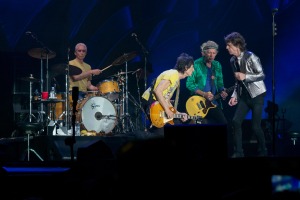
- Rivera ‘21 ‘24 named Assistant Director of AdmissionsAs a first-generation college graduate, Eliezer Rivera knows all about the fears that high school students have about higher education, the college application process and the financial obligations of going to college. Rivera, a 2017 Fitchburg High graduate and two-time Fitchburg State University alumnus - completing degrees in 2021 and 2024 - parlayed his education into the biotech industry, then as a high school teacher and now as assistant director of admissions at Fitchburg State. “I am so excited for this role not because of the traditional admissions process, but because of the presence and impact it will have on the local students and community, being a Worcester County and Fitchburg kid myself,” said Rivera, who earned his bachelor’s degree in biology and master’s in educational leadership and management. “I understand how hard, challenging and scary that process can be for first generation and low-income students, having been one myself.” Rivera worked in biotech for several years before becoming a science and math teacher at St. Bernard’s Central Catholic High School in Fitchburg. Now, at Fitchburg State, he hopes to be a helpful resource to high school students looking to attend college and helping their families fully navigate and understand that higher education is a real possibility, regardless of obstacles they think might stand in the way. Rivera’s coverage area will be centered around the city, including Fitchburg High, Sizer, St. Bernard’s and Monty Tech, but including area towns of Lunenburg and Leominster, extending from Gardner to Littleton. But Rivera will have direct contact with students at Fitchburg High with an office inside his alma mater. “I’m excited to have space in Fitchburg High,” Rivera said. “Being from the same background of the majority of the Fitchburg Public Schools – being low income, first generation, Hispanic/Latino male, I think with that I experienced a lot of miscommunications and a lot of language-barrier issues on my parent’s behalf that did affect how I went to college and my brother. My brother didn’t go to college because he wasn’t informed on the dynamics of the college application process. My parents never went to college, so he ended up having issues with his financial aid and he was not able to go, so he ended up joining the military and his professional career looks a lot different than what he thought it would look at the end of high school. “Having experienced that and seeing it firsthand in my household, I want to be that bridge that brings Fitchburg State and Fitchburg High together,” he said. Pam McCafferty, Vice President of Enrollment Management and Student Success, said the university is very fortunate to have Rivera back on campus and serving in this important role. “He brings such a wealth of experience and commitment to the community and students that he serves,” McCafferty said. “Additionally, having a dedicated office space within Fitchburg High School will allow Eli to be an accessible resource for students as they navigate their college decision journey. We’re thrilled to have him on the team recruiting the next generation of Falcons.” Rivera fully understands that there are so many questions and worries during the college process. “Whether it’s a lack of communication, understanding or presence, that puts a limit on youths’ minds and it causes them to think that they can not be one of those people, or that another path is better,” Rivera said. “It almost causes them to turn away from education.” Rivera is all about sharing information, building trust and opening up the lines of communication to help educate students and families about higher education. “I want to connect and ease their worries about the college application process, affordability and what that looks like long term,” said Rivera, who said Victor Rojas from Fitchburg High’s GearUp program was that person for him when he was in high school. “It’s not as scary as it all seems. There is financial support out there to make college affordable. I think a lot of the miscommunication is from the financial aspect of it.” Rivera, 26, was born and raised in Puerto Rico. He moved to Fitchburg when he was 2 years old, but moved back to Puerto Rico in the fifth grade up until his sophomore year. “There was a language barrier because I was not fluent in Spanish,” Rivera said. He eventually moved back home to Fitchburg – on Day Street, a short walk from Hammond Hall – and graduated from high school and then college in Fitchburg. “I knew I had to consistently challenge myself if I wanted to be able to do great things and succeed,” he said. The passion to help has always been in Rivera’s heart. “I want to motivate and inspire them to do something better with their lives and make the most of the opportunities their parents are giving them,” he said. “I want to be a role model for those students. I know where they come from and what it looks like, so being able to show them that if they take advantage of an opportunity being given to them, their life can look different.” Rivera said his comprehensive education at Fitchburg State was life-changing. “It gave me an opportunity that a lot of people don’t get,” he said. “It gave my life a type of direction where I wanted to go. It changed my perspective on education. It was an opportunity to become a lifelong learner. It’s been the best investment that I’ve been able to make in my life,” he said. “Education changed my life in all ways from being a student, a leader, to being a husband and a father, and setting that standard in all areas of my life.”
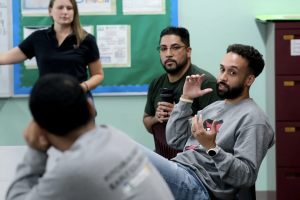
- Eighth class of police recruits graduatesPride filled Weston Auditorium on the Fitchburg State University campus on Friday, as the university held the graduation of its latest police academy cohort, almost all of whom have been hired by municipal police departments across Massachusetts. The 8th Recruit Officer Course (ROC) members proudly completed the groundbreaking police program that blends academic and tactical training, allowing graduates to complete both bachelor’s and master’s degrees, along with full certification to work in municipal police departments in just five years. The program was developed in collaboration with the Massachusetts Municipal Police Training Commission (MPTC). Class leader Brody Tapply reminded all his classmates of how far they’ve come in this journey and everything they’ve learned throughout this process. “I want you all to take a moment and reflect on who you were walking onto this campus four years ago,” said Tapply. “I want you to remember all of the late night studying, endless exams, and numerous qualifications. In the moments that you thought it would never end, look at us now. I want you to continue to be the best version of yourself not only for you, but for your communities, your departments, and your families. Do not forget to hold onto everything you have learned. Take this mentality, and continue to pursue anything and everything in your future. Always keep yourself accountable, and put your full heart and effort into everything you do.” Tapply told his classmates that there will definitely be hard days as a police officer. “During those times, remember everything you have put into where you are right now, and why you are who you are,” he said. “Without the structure we received as a class, it is impossible to think that we would be where we are today.” The 8th ROC didn’t accomplish this journey alone, however. “The dream, and goal that we have accomplished, would not have been made possible without (Academy) Director (Ola) Wysocki, our drill instructors, physical training staff, and the family and friends joining us today.” Tapply made sure to credit Wysocki for her “continuous devotion to our class, and the entire police program, is wholeheartedly special.” He continued: “Your passion for making sure we become the best versions of ourselves, does not go unnoticed. Day in and day out, you made sure that we stepped into the right direction, and constantly supported us towards our goals. Without your devotion, we would not be who we are today. Thank you for going above and beyond, to guide us, educate us, and move us towards our ultimate goal.” Fitchburg State President Donna Hodge also addressed the graduates and guests. “This academy is more than a program,” Hodge said. “It is a promise. A promise that public higher education and public safety can work hand in hand. A promise that innovation and integrity can meet in the same training ground. A promise that Massachusetts can lead the nation in preparing those who serve and protect. “And today, we fulfill that promise through you—graduates who have proven yourselves across your undergraduate degrees and the past seventeen weeks of relentless challenge,” Hodge said. “You studied. You trained. You endured. You met every test of character, discipline, and resolve. And now you stand ready to take the oath not only as officers, but as guardians.” The president thanked the families in attendance for making sacrifices for their loved ones, and to the chiefs and departments for hiring these new graduates. “And to our graduates—this is your day,” Hodge said. “From this day forward, the responsibility you carry is immense. The authority you hold is profound. And the example you set will help shape not just the safety of our streets, but the trust of our communities, and the strength of our democracy. We are proud to call you graduates of Fitchburg State University. We are grateful for your service. And we are hopeful for the future you will help build. Be safe. Serve with honor. Lead with heart. Let the momentum of this achievement carry you forward into a career of service and distinction. And know that today, and always, you carry the confidence of this university and this Commonwealth.” Wysocki recounted when the 8th ROC began their academy training on May 19, and the successes and setbacks of the ensuing 17 weeks. A weekly tradition for the class was her Friday speech about making “good decisions” over the weekend. Now, Wysocki is asking each new officer to make good decisions with their time, energy and work. “The most valuable commodities you have are your time and ability to be kind,” she said. “Let me say that again, your most valuable commodities are your time and kindness. Be generous with both. Make time for family and friends, especially when you feel like you have no time. Do not get sucked into living to work, and when you inevitably do, change your priorities. Lead with kindness, whenever tactically feasible. If you want to change the world, start by being the kind of officer you will want for your family. “Do not worry about the apparent effect you have on the world, be diligent in doing the best you can in all circumstances,” she said. “We have given you a firm foundation, now it is up to you to hone your craft. I hope you all feel a sense of accomplishment, and a feeling of knowing yourselves better than you did 17 weeks ago. Never forget where you come from, and if you do, we are always here to remind you.” University Police Chief Michael Cloutier said the oath these graduates have taken is about more than just enforcing laws; it's a promise to be in service to others and to develop meaningful relationships with their communities. “Our hope is that each of them will be the person who stops to talk to children in the park, or knows the local business owners by name,” Cloutier said. “Because that is where true trust begins, and it's the most powerful tool they will ever have.” State Rep. Michael A. Kushmerek – a two-time Fitchburg State alum – MPTC Director of Training Andrea Nardone, and Fitchburg Mayor Samantha Squailia were also in attendance. The members of the 8th ROC and the departments that have hired them include Class Leader Brody Tapply of Lunenburg (Lunenburg Police Department), First Squad Leader Adam Bourgault of Fitchburg (Fitchburg Police Department), Joshua DiPersio of Tyngsboro (Chelmsford Police Department), Kyle Dupuis of Hopedale (Hopedale Police Department), Julia Marsell of Holliston (not hired yet), Colin Bozek of Tewksbury (not hired yet), Thomas Farr of Princeton (Littleton Police Department), Second Squad Leader Kayla Forbes of Marshfield (Rockland Police Department), Shea Lucontoni of Newburyport (Newburyport Police Department), Asha Speller of Tewksbury (Tewksbury Police Department), Owen Williams of Westminster (Ashburnham Police Department), Shane Bissanti of Franklin (Walpole Police Department), and Christopher Black of Gardner (Gardner Police Department). Class Awards: Academic Achievement Award – Julia Marsell Physical Training Achievement Award – Thomas Farr Emergency Vehicle Operations Course (EVOC) Award – Shane Bissanti Firearms Training (“Top Gun”) Award – Brody Tapply Rifle Training (“Top Gun”) Award – Shea Lucontoni 100 Percent Award – Brody Tapply Click to read in-depth magazine profiles on Tapply, Forbes, Farr and Bourgault. To learn more about the police program, please visit https://www.fitchburgstate.edu/academics/programs/police-program-41-con… Watch the FATV recording of the ceremony.
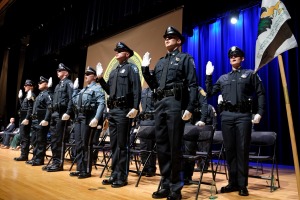
- Fitchburg State observes Constitution Day with a look at the concept of due processFitchburg State University will observe Constitution Day with a series of programs exploring the concept of due process. The programs, sponsored by the university’s General Education program, will begin with a talk at 3:30 p.m. Monday, Sept. 15 by attorney and Fitchburg State alumnus Shane Rodriguez entitled “Rights, Wrongs and the Rule of Law: Understanding Due Process.” Rodriguez, a member of the university’s Board of Trustees, is also an assistant professor of law at the Massachusetts School of Law and a former Leominster police officer. His talk will be presented in Hammond Hall Room G01. Admission to the Constitution Day events is free and open to the public. Constitution Day commemorates the formation and signing of the U.S. Constitution on Sept. 17, 1787. Fitchburg State’s observances are planned and organized by the General Education Program, with campus experts on the Constitution and the law collaborating on a theme. The planned events focus on that theme as well as how different general education learning outcomes work together: The Center for Teaching and Learning in the Amelia V. Gallucci-Cirio Library will present “The Unplanned Curriculum: Navigating Newsfeeds and Nuance in the Classroom” at 3:30 p.m. Tuesday, Sept. 16. The Constitution Day keynote address will be given by Hon. David J. Breen, First Justice, and Hon. Lisa Ann Grant (Boston Municipal Court), presenting “What Is Due Process of Law?” at 12:30 p.m. Wednesday, Sept. 17 in the Hammond Main Lounge. Assistant Professor Michael McCutcheon of the Behavioral Sciences Department will host a session entitled, "Due Process and Law Enforcement" at 3:30 p.m. Thursday, Sept. 18 in Ellis White Lecture Hall in Hammond Hall. Professor J.J. Sylvia of the Communications Media Department will present “Due Process Ethics: From Sullivan to Social Media” at 11:15 a.m. Friday, Sept. 19 in the Miller Oval at Miller Hall. The Constitution Day programs are presented with funding from the university’s Office of Student Development.
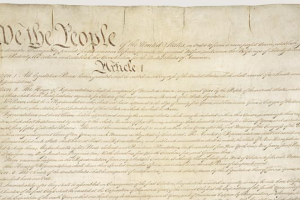
- Gallery exhibit features Barros’ ‘An Entanglement of Space and Time’Fitchburg State University’s first art exhibition of the academic year will feature the inspiring 360-degree panoramic work of Ricardo Barros in “An Entanglement of Space and Time.” Barros’ work will be exhibited in the Hammond Hall Art Gallery through Sunday, Oct. 19. There will be an opening reception at 3:30 Thursday, Sept. 18 at the Gallery. Gallery hours are Monday-Thursday (7 a.m. to 11:30 p.m.), Friday (7 a.m. to 5 p.m.), Saturday (noon-5 p.m.) and Sunday (noon-11:30 p.m.). Barros’ 360-degree panoramic photographs record everything visible from a particular point in space. Dozens of shots, each looking in a different direction, are digitally stitched into a single, seamless image. “Were I to present the resultant image on a computer, the viewers’ experience would be one of virtual reality,” Barros said. “They could choose where to look, and their perception would resemble that of someone physically in that setting. Flattening the panorama into a two-dimensional photograph distorts how that setting is represented. And because it takes time to make the required shots, a person photographed at one location in one shot may reappear at a different location in a different shot. Yet, in the finished panorama, they are concurrently present. Our reconstruction of a person’s path to progress from Point A to Point B asserts a logical sequence of events and, indirectly, acknowledges the passage of time. Thus, we make sense of what we see. Except that in the flattened photograph, we see everything, all at once.” For Barros, photography is a form of observation. “We can often learn things when we look more closely, and especially so when we look at something from a different perspective,” he said. “In making these pictures, I know what elements I am including in my composition, but I never know what the final photograph will look like. My reward lies in the discovery.” Barros said that a friend pointed out to him that his interests paralleled those of physicists who study time and space. “For him, the 360s were a conceptual illustration of Relativity Theory,” Barros said. “These photographs seemingly unfold space and bend time. While I produce my imagery purely with artistic intent, I am comfortable having it nestled within that context.” Barros is a photographer, writer, curator, and filmmaker. His works are in the permanent collections of eleven museums, including the Smithsonian Museum of American Art, the Museum of Art of São Paulo, and the Fitchburg Art Museum. Ricardo was awarded a Fellowship in Photography by the New Jersey State Council on the Arts in 1984 and 2021, and the Marlene and David Persky Present Tense Prize by ArtsWorcester in 2024. He recently moved to Fitchburg with his wife, artist Heather Barros. More information at www.ricardobarros.com.

- President Hodge declares ‘Year of Momentum’Fitchburg State University President Donna Hodge proclaimed it to be the “Year of Momentum” in her State of the University address on Wednesday, in front of students, faculty, staff and friends, at the Main Quadrangle on campus. It was a monumental day of momentum, as Hodge officially announced a new Memorandum of Understanding (MOU)—one that will expand access and opportunity for students across Fitchburg. The new agreement outlines the university’s new direct admissions initiative, designed to remove barriers, simplify access, and guarantee admission to students in good standing at their high schools. Starting next fall, any Fitchburg resident enrolled at one of the four city high schools who maintains a 2.25 GPA will be guaranteed admission to Fitchburg State and will attend tuition and fee-free, so long as they remain in good standing. Additional details may be found on the university’s website at fitchburgstate.edu/admissions-and-aid/direct-admissions. “It’s a clear, supported pathway to college,” said Hodge, the 12th president at Fitchburg State and first woman to hold the role at the university. “One that gives families certainty, gives school counselors a trusted partner, and gives students—especially first-generation students—a real and reachable future. This is equity in action. This is economic development in action. And this is a promise we are proud to make—and keep—right here in North Central Massachusetts, with the support of our Commonwealth and federal funding initiatives.” Fitchburg State established these new agreements with Fitchburg High School -- including Goodrich Academy -- Montachusett Regional Vocational Technical School, St. Bernard’s High School and the Sizer School. “Together, we are building a future where every Fitchburg student knows: College isn’t just possible—if you’ve got the will and the commitment, it’s promised,” Hodge. Several scholastic partners joined President Hodge at the table for a ceremonial signing to conclude the address on Wednesday morning. Those school leaders included: Fitchburg Public Schools’ Superintendent Jon Thompson and Fitchburg High Principal Matthew Lamey; Montachusett Regional Vocational Technical School’s Superintendent Thomas Browne and Principal Dayana Carlson; St. Bernard’s Principal Robert Carlin; and Sizer School’s Principal Andrew Lay and Executive Director Marc Gosselin. “President Hodge and I want to provide more opportunities for kids,” Thompson said. “President Hodge is really pushing the collaboration between Fitchburg and Fitchburg State. Whatever opportunity we can give kids and provide kids in order for them to be successful in college, we’re going to do it. This is just the beginning of our partnership. “I think it’s going to open up a lot of opportunities for kids who thought college wasn’t a possibility before,” Thompson continued. “I’m excited about it.” The program is designed to give students in Fitchburg the opportunity to attend college at no cost. “Now that we can have our students make this transition without having to worry about money or getting into places, knowing that as long as they work hard through high school they have this opportunity guaranteed to them,” Carlin said. “I think it’s going to change lives in our community.” Added Browne: “The fact that we have Fitchburg State right in our backyard and now that they are providing, not just affordable, but free (education), that’s the kind of thing that really puts it over the top. I think this program is going to be fantastic and have a big impact. We look forward to being able to share this with our students.” College can now be a reality, and Sizer’s Lay and Gosselin are thrilled that their students will have this as a legitimate educational option right at their fingertips. “It will broaden opportunities, open their eyes and give them opportunities to network and access a strong education in a way they may not have envisioned for themselves entering high school,” Lay said. “It makes things real for them.” For students at Sizer and across Fitchburg, Gosselin thinks that it’s a tremendous opportunity because it makes college a reality. “For many of our kids, especially North Central, they don’t see themselves as college students,” Gosselin said. “This totally unlocks that for them in a real powerful way.” In her first State of the University address a year ago, Hodge described her vision of Fitchburg State’s Year of Service: a time to listen, to learn, and to build trust. This year is the Year of Momentum: a time to accelerate the good work that’s begun and to refuse to lose steam. That momentum shows up in the numbers: nearly 6,000 total students this fall, including 740 new undergraduates—and 44 international students from 19 countries. “Fitchburg State is proud to serve this city and this region, but let me be clear: we are not just a regional campus,” Hodge said. “We are a statewide solution. A national asset. A public good.” President Hodge also honored this year’s group of Presidential Ambassadors, who are bold representatives of the university’s spirit, service, and momentum. They volunteer at high-level campus and community events. They meet alumni and legislators. They tour special guests around campus. And they do it all with poise, humility, and a deep love for Fitchburg State. “These students represent the best of who we are and the best of where we’re going,” Hodge said. Julia Arena and Matt Gill are returning Presidential Ambassadors, while this year’s new President Ambassadors include: Veronica Barton, Kole Broderick, Lexi Desimone, Priscilla Fordjour, Geybrell Liriano, Sophia Moore, Sydney Nortelus, Peter J (PJ) Norton, Alexis Sandmann, Reshawn Stewart and Aidan Thompson. “To our new Ambassadors: The green blazer you’re about to receive is not just a symbol,” said Dr. Christine Dee, Professor of History and Special Assistant to the President, who will supervise the ambassadors this year. “It’s a charge. To represent this campus with distinction. To serve with integrity. And to model the kind of community we all aspire to build.” President Hodge also officially announced that Dr. Travis Chambers – the Assistant Dean for Administration and Finance at the Georgia State University College of Law – will join the Fitchburg State family as its new Chief Financial Officer on December 1. The State of the University celebration also honored faculty and librarians who received tenure and promotion at the close of last year. The annual faculty and librarian awards were announced, along with welcoming the newest faculty emeriti. A new recognition started with the President’s Mission in Action Staff Awards—created to honor staff members who have gone above and beyond in service to our students and to the mission of this university. The event was streamed by FATV and may be viewed online. The Matriculation Ceremony in Weston Auditorium kicked off the day’s festivities on campus, formally welcoming incoming students in to officially join the Fitchburg State University community. The keynote speaker was Stephany Infante, of Lawrence, who graduated from Fitchburg State in 2016 with a degree in business administration. A self-described quiet student, she found her voice at Fitchburg State, embracing leadership opportunities that changed the course of her life. At 22, she became the first Hispanic woman elected to the Greater Lawrence Technical School Committee. In 2021, at the age of 27, she ran for public office and made history again, becoming the first person of color to represent the Lawrence district, as a city councilor, which she proudly still serves today. Currently, at 31, she is the youngest city councilor and the vice president of the Lawrence City Council. “I share my story with you today not to impress you, but to inspire you,” Infante said. “I want you to embrace the opportunities that await you at Fitchburg State. The path to your passion and purpose may not be a straight line. Sometimes, we need to open our eyes and minds to see that the solution to our problems is not to change our environment, but to change our perspective and take action. Once you realize that, you will be able to make decisions that truly uplift you.” Infante’s three pieces of advice are to get involved, embrace imperfection and build your own plan.
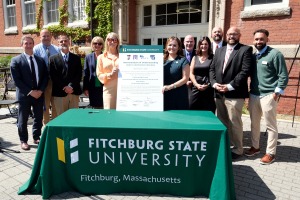
- Fitchburg State prepares for Fall 2025 semesterFitchburg State University will launch the 2025-26 academic year with a celebration for students, faculty, staff and the wider community. University President Donna Hodge will present her second annual State of the University address at 10:30 a.m. on Wednesday on the main quadrangle. The celebration will include the presentation of faculty and staff awards as President Hodge outlines her vision for her second year leading the institution. Following her address, which will focus on the theme of “momentum,” the campus will host a picnic on the quadrangle that is open to all. “I am proud to open another academic year at Fitchburg State, surrounded by colleagues, students, and partners who believe in the power of education to change lives,” President Hodge said. “This is a year of momentum for us—a time to stabilize where needed, heal what has been frayed, and transform for the future. What unites us is the joy and responsibility of our mission: to provide an excellent education to anyone with the desire and the will to seize the opportunity. Together, we will move this university forward with purpose and pride.” The celebration will begin earlier that day when the university formally welcomes its incoming class at a matriculation ceremony at 9 a.m. in Weston Auditorium. The ceremony will mark the official start of the academic journey for Fitchburg State’s new freshmen, transfer students and graduate students. Additional dates of note for the coming semester: The majority of new residential students will move in Sunday, Aug. 31, starting at 9 a.m. from the Wallace Civic Center. The northbound lanes of North Street will be closed to non-university traffic between Pearl and Ross Streets from 9 a.m. to 2 p.m. on that date. The majority of returning residential students will move in starting Tuesday, Sept. 2. There may be brief road closures around campus between 9 a.m. and 5 p.m. that day. Fall semester classes will start at 8 a.m. Thursday, Sept. 4. Friday Night Lights: Fitchburg State football hosts Dean on Friday, Sept. 5 at 7 p.m. to kick off the season. The Bruins Fan Fest Tour – designed to grow the game of hockey throughout New England – flocks to the Wallace Civic Center at Fitchburg State University on Saturday, Sept. 6, from 11 a.m. to 2 p.m. Fitchburg State University is proud to be one of only three locations across the state and New Hampshire to host the Boston Bruins 2025 Fan Fest Tour. Rock the Block XXVII, where dozens of student clubs and organizations, along with campus offices, share information about extracurricular opportunities on and off campus, will be held on the main quadrangle and along Highland Avenue starting at 3:30 p.m. Tuesday, Sept. 9. The rain date is Sept. 11. The 8th recruit officer course (ROC) of Fitchburg State’s groundbreaking police program will graduate at 1 p.m. Friday, Sept. 12 in Weston Auditorium, 353 North St. The 13 graduates, who completed their bachelor’s degrees in criminal justice in May and spent 17 weeks this summer in police academy training, will be certified as police officers ready to work in municipal departments in Massachusetts and neighboring states. On Monday, Sept. 15 at 3:30 p.m., join us for Constitution Day: "Rights, Wrongs and the Rule of Law: Understanding Due Process" with attorney and Fitchburg State alumnus Shane Rodriguez. Rodriguez, a member of the university’s Board of Trustees, is also an assistant professor of law at the Massachusetts School of Law and a former Leominster police officer. His talk will be presented in Hammond Hall room G01. Admission is free and open to the public. Hispanic Heritage Month will be observed from Sept. 15 to Oct. 15. There will be a series of entertaining and informative events throughout the month and will be posted to the university website at fitchburgstate.edu. Homecoming 2025 events will be held on Thursday, Oct. 2 to Sunday, Oct. 5 and will include a pep rally at 3:30 p.m. Thursday, Oct. 2; a casino night and semi-formal dance at 7 p.m. Friday, Oct. 3; and a carnival in the Ross Street parking lot from 4 to 10 p.m. Additional information on tickets will be posted to the Homecoming website. The Alumni Awards Brunch will be at 10 a.m. on Sunday, Oct. 5 at the Hammond Hall Main Lounge (invitation only). Additional information on news and events is posted on the Fitchburg State website at fitchburgstate.edu.

- Wallace Civic Center hosts Boston Bruins Fan Fest Tour on Sept. 6Fitchburg State University is proud to be one of only three locations across the state and New Hampshire to host the Boston Bruins 2025 Fan Fest Tour. The Bruins Fan Fest Tour – designed to grow the game of hockey throughout New England – flocks to the Wallace Civic Center at Fitchburg State University on Saturday, September 6, from 11 a.m. to 2 p.m. “The Wallace Civic Center is part of both Bruins history and our own story at Fitchburg State. Hosting Fan Fest here connects generations of hockey fans, celebrates the game’s roots in our region, and showcases the spirit that fuels our own championship athletics programs,” said Fitchburg State University President Donna Hodge. “We’re proud to be part of Fitchburg and North Central Massachusetts, where this rink has been a gathering place for decades. It’s an honor to welcome the Bruins back at a moment when momentum is building on our campus and across the community, and to share in an event that reflects the pride, resilience, and connection that define this region.” The Wallace Civic Center and Boston Bruins will always be intertwined. In the 1970s, the Bruins held their training camps at the Wallace Civic Center in front of packed crowds, as fans got to watch the likes of National Hockey legends Bobby Orr, Terry O’Reilly, Phil Esposito and Johnny Bucyk showcase their top-end ice hockey talents for all to see in Fitchburg. "It will be an honor to see generations of fans gather in a place where so many Bruins legends once skated," said University Police Chief Michael Cloutier, who oversees campus operations. “This rink is a part of Bruins history, and we're fortunate to be in a position to celebrate that legacy with the community. We anticipate a fantastic day at the Wallace Civic Center and wish for everyone to have a safe and enjoyable time.” Under the guidance of legendary hockey coach Dean Fuller, the Fitchburg State ice hockey team had championship success in March at the Wallace Civic Center, defeating the MCLA Trailblazers, 3-1, to capture the MASCAC title and earn a berth in the prestigious NCAA Division 3 tournament in Utica, N.Y. The Falcons have won three MASCAC ice hockey championships (2011, 2018, 2025) in the history of the program. Fans of all ages will have the chance to participate in hockey games, explore interactive exhibits, shop Bruins merchandise and more. The Boston Bruins Foundation will also be on-site with BFit Combine stations for various kid-friendly fitness activities. Members of the Bruins organization are expected to join the festivities at each stop of the Fan Fest Tour. At the Wallace Civic Center, kids who have signed up for the Bruins Academy Learn to Play program, presented by Pure Hockey, will have the opportunity to be fitted for brand new hockey gear. Registration for the Fall 2025 Learn to Play program opens Wednesday, August 13, at 12 p.m. Fans interested in learning more should click HERE. On-site equipment fittings at Fan Fest will be limited to participants who have pre-registered. Admission to each Fan Fest Tour stop is free, and fans are encouraged to pre-register to expedite entry. To pre-register and for more information, fans should click HERE. The Fan Fest begins at Chesna Memorial Rink in Hanover on September 5 (5-8 p.m.) and concludes on September 7 at Everett Arena in Concord, N.H. (11 a.m. to 2 p.m.)
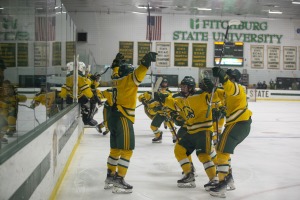
- Registration opens for Fall 2025 ALFA offeringsRegistration opens Tuesday, Aug. 5 for Fitchburg State University’s Adult Learning in the Fitchburg Area ( ALFA) fall courses, with offerings that will include weekly walks to learn about New England bird migration, the art of decluttering, ecology and fungi identification, a review of the role of recent Supreme Court cases, and autumn nature hikes in North Central Massachusetts. There are more courses available, including the art and craft of archives at the Fitchburg Historical Society, learning about American architecture, a nonfiction creative writing workshop, and a course that surveys the history of Venice. There are dozens of classes on the calendar, with the full program viewable online at fitchburgstate.edu/alfa. ALFA is a lifelong learning program that has served adult learners in Fitchburg and the surrounding communities for the past 20 years. The program provides opportunities for local residents with similar interests to meet in an informal setting and pursue learning for enrichment and personal growth. ALFA is sponsored by the School of Graduate, Online, and Continuing Education at Fitchburg State. Participants are encouraged to provide input and recommendations. Classes are taught by community members and full-time Fitchburg State faculty. Most courses are $45 (and free for students over age 90). A limited number of scholarships are available. See the complete course listing and register online at marketplace.fitchburgstate.edu/alfa. ALFA is always on the lookout for new instructors and new subject matter to share with its participants. Anyone with a specialty that they think others would be interested in should contact the ALFA Office at alfa@fitchburgstate.edu for details about becoming an ALFA instructor. The ALFA office is available Monday-Friday from 8 a.m. to 5 p.m. Any questions call 978-665-3706, or email at alfa@fitchburgstate.edu.
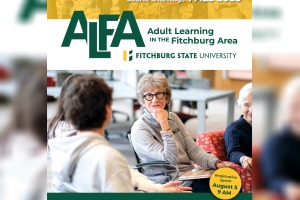
- Future Falcon Academy welcomes local students to campusThe mission is simple: Empower, inspire and transform. Fitchburg State University’s Future Falcon Academy recently welcomed middle school students from Fitchburg, Leominster, Ayer/Shirley and Gardner for the Future Falcon Academy All Stars Summer 2025 event. This immersive full-day experience provided each student with a fun and meaningful introduction to university life. Students participated in a variety of engaging activities, including a self-defense workshop, a "walk and talk" session, and recreational time in the game room. The day also featured lunch at the Holmes Dining Commons, an interactive session exploring emergency and service vehicles up close at the Fitchburg State University Police Department, and an Upward Bound showcase to celebrate the talents and efforts of those talented participants. “The Future Falcon Academy is designed to introduce middle schoolers to the community and opportunities that Fitchburg State University offers,” Fitchburg State University Coordinator of the Future Falcon Academy Lourdes Ramirez said. “Whether it’s learning a new skill in the self-defense workshop, bonding during game room fun, or speaking with our campus police and safety professionals, every activity is intentional. We want the middle school students to feel empowered to envision themselves in higher education and know that they belong here at Fitchburg State University.” Ramirez says that events like these are all about creating positive, welcoming experiences that build confidence and can be the spark that drives a student to pursue their goals. “Exposure is everything,” Ramirez said. “For many students, especially first-generation college-bound youth, just stepping onto a college campus can shift their mindset. When they get to walk through the quad, eat in the dining hall, or meet professionals from educators to campus police, it makes the idea of college more tangible and real. We’re not just saying college is possible, we’re showing them what it looks like and, more importantly, what it feels like.” University Police Chief Michael Cloutier describes a commitment to fostering strong, foundational relationships between his officers and students, embracing every opportunity to engage with students. These interactions, he said, are crucial for building trust and open communication. “Our ongoing collaboration with Fitchburg State University's Future Falcon Academy is invaluable,” Cloutier said. “It's not just about fostering professional partnerships; it's a real opportunity to build positive relationships and trust with middle school children, shaping a safer and more connected future for everyone involved. I would like to thank our city partners – the Fitchburg Police and Fitchburg Fire departments – for their participation, as well as our university colleagues in the School of Education and Capital Planning and Maintenance.” The students said they loved the experience of being on campus and attending the Future Falcon Academy. “It’s a really nice place to be; it’s very calming and the classrooms are a really nice size,” said soon-to-be Leominster High ninth grader Gabrielle Ellis. “Everything just works together.” “Fitchburg State is really nice and I’m going to try to come here when I’m older,” said Longsjo Middle School eighth grader Enzo Nunez. In the self-defense workshop, instructed by owner Tonya Peters of Force Defense & Fitness of Holden, students gained knowledge, skills, and mindset to protect themselves in potentially dangerous situations. “I like self-defense because it teaches you how to protect yourself in future situations,” Ellis said. Angel Marroquin, a seventh grader at Sky View Middle School in Leominster, said he enjoyed playing billiards and Nintendo with his friends in the game room. Nunez enjoyed the Touch-a-Truck event in the parking lot of the police station. “I was excited to see what the fire trucks looked like on the inside, and what the police cars looked like,” he said. Fitchburg State University’s Future Falcon Academy and Future Educator Academy are innovative pipeline programs that open doors for underrepresented youth—especially English language learners—to see themselves as future college students and inspiring educators. Through immersive on-campus experiences and mentorship rooted in culturally responsive practices, these academies empower young learners to build confidence, find community, and dream big about their futures in higher education and the classroom. These programs are designed to: provide early access and hands-on experiences, foster identity and belonging, build clear pathways to higher education, grow a diverse educator workforce and champion culturally responsive learning.
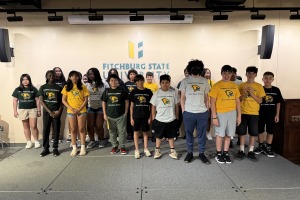
- Summer Series Launches July 10Fitchburg State University is opening its campus to the public for its inaugural Summer Series, a month-long lineup of free, family-friendly events designed to bring joy, connection, and creativity to the heart of the city. Kicking off Thursday, July 10 at 8 p.m. with a screening of Disney Pixar’s beloved animated film Cars, the series will continue every Thursday through July 31, featuring music, games, a pet-themed craft market, and more—all hosted on the university’s picturesque main quad. “Fitchburg State belongs to this city. We are proud to be a community partner, and this series is our way of inviting our neighbors to make the most of this beautiful shared space,” said University President Donna Hodge. “Whether you’re here for a movie, live music, or a laugh with friends over bingo and trivia, we want you to feel at home. This campus is yours, too.” Attendees are encouraged to bring lawn chairs, blankets, and picnic-style snacks. Light refreshments will also be available for purchase. In the event of rain, events will move indoors to the main lounge in Hammond Hall. Fitchburg State Summer Series Schedule: Thursday, July 10 – Outdoor Movie: Disney Pixar’s Cars (8:00 p.m.) Thursday, July 17 – A Night of Music featuring The James Germana Band (5:30 p.m.) Thursday, July 24 – Pet Crafters Market: Shop local vendors with a love for furry friends (5:30 p.m.) Thursday, July 31 – Bingo & Trivia Night: A community game night under the stars (5:30 p.m.) For more information or weather updates, visit fitchburgstate.edu/events.

Loading...


